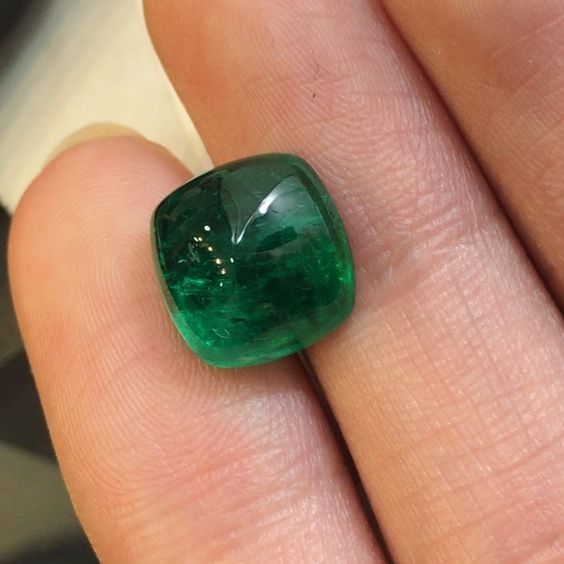Colombian emeralds: From the mine, to the market
Emeralds are beautiful gems known for their exquisite beauty and vivid green color. However, few know the long and complex process that these stones go through before reaching our hands.
From the extraction in Colombian mines to their arrival at the market, the emerald route is full of key challenges and stages. In this article, we will explore in depth the fascinating process of extraction and production of emeralds, revealing the secrets behind their beauty and courage.
Geological formation of emeralds
The most common formation of an emerald crystal is in an elongated six-loiding prism, sometimes with stretch marks along its length. Natural emeralds form when beryllium, aluminum, silicon, oxygen and one or more of these elements mix influence in their characteristic green color thanks to the correct geological environment.
While this process can occur on metamorphic or sedimentary rocks, most emeralds are extracted in regions with methane rock environments, Brazil is one of those regions.
In Colombia, the emeralds are located in the eastern Andes mountain range. Unlike Brazilian and African sources, Colombia has a sedimentary rock environment. Its emeralds are associated with hydrothermal veins.
As the Andes mountains formed, the layers of sediment combined and folded. When the rocks were forced to come together, they broke down, forming lines of geological faults.
Some of those fault lines provided pathways so that hot, mineral-rich fluids could be raised through the layers of rock. The mineral-rich fluids interacted with sedimentary rocks and thus grew emerald crystals.
Thanks to this type of training, Colombian emeralds are considered exceptional and unique in the world, not only for the high quality and intense color of the stones, but also for the characteristics of the place that lead to their formation.
Where are the emerald mines of Colombia?
In Muzo, in the northwest part of the department of Boyacá, it is where the largest deposits of this precious stone are concentrated.
Apart from Muzo, the mines of Borbur, Coscuez, Chivor, Peñas Blancas, La Pita and Chiípama stand out (the latter characterized by the predominance of informal mining, the so-called guaqueros).
Gachetá and Gachalá, two municipalities in the north-east of Cundinamarca, complete the most important area of emerald exploitation in the country.
Methods of extraction
The extraction of Colombian emeralds has traditionally been manual and handcrafted work. Miners enter the mines and dig narrow and deep tunnels, using basic tools such as beaks and shovels. The task is extremely arduous and dangerous, as miners face difficult conditions, such as lack of light, dust and the possibility of collapses.
The miners' biggest mission is to find the mother vein, which is the main source of emeralds. This vein is a layer of rock in which the precious stones are embedded. To find it, miners follow tracks like cracks in the rock, changes in mineralization and experience accumulated over generations.
Once the mother vein is found, the miners begin to extract the fragments of rock that contain it. These fragments are taken out of the mine and taken to the surface, where they are classified and separated.
Water is used to wash the rock and separate emeralds from other minerals and sediments. The emeralds then go through a cleaning and polishing process to reveal their characteristic brightness and colors.
Selection and classification of emeralds
Once removed, emeralds go through a rigorous selection and classification process. Experts assess the quality of gems, taking into account factors such as color, clarity, cutting and weight.
In this part we must highlight the experience and knowledge in this process by the emeralds, since the determination of the value of an emerald can be a challenge even for the most experienced professionals.
Cut and polish of emeralds
Cutting and polishing are vital stages in the transformation of a raw emerald into a finished gem. While an emerald in a natural state can possess the potential for beauty, a carver makes it highlight its true brightness, color and clarity.
Through a precise cut, the facets of the gem are shaped to maximize the reflection of light and color play. The polish further perfects the surfaces, eliminating imperfections, inclusions and enhancing its lustre. Together, these processes give life to the gem, revealing its unique character.
The size process consists of cutting the gem with a diamond disc saw or cutter, start shaping it with a disserat, and finally it is carved and polished until smooth and glossy.
In the stone carving we will use widia chisels, working the stone from outside towards the center of the block and, if possible, in the direction of the betas, which will minimize the risk of accidental breakage.
The style by which carvers are decided in each case depends on the type, shape and quality of the brute gem. The cutting of a gem directly affects its total value, as the cut determines how well the gem presents its base color to the view.
Treatments and improvements
Colombian emeralds are known all over the world for their intense green color and exceptional beauty. However, it is important to note that most natural emeralds require certain treatments and improvements to improve their appearance and durability.
However, it should be borne in mind that depending on how comprehensive this treatment applied to natural emerald is, this will be the total value of emerald. That is, to the greater the number of improvements, the cost of the gem will decrease as it will no longer have the same purity as it had at the beginning.
Some of the main treatments in emeralds are:
- Enjoyed:
Oil treatment is one of the most commonly used methods to improve the appearance of emeralds. In this treatment, colorless oil, such as cedar oil or mineral oil, is applied on the surface of the emerald and sometimes even injected into the fractures and cracks of the stone. The purpose of this treatment is to improve the clarity and general visual appeal of the emerald.
- Resina:
Resin treatment is another method used to improve Colombian emeralds. This process involves the application of an epoxy or polymer resin on the surface of the emerald in order to fill the cracks and improve the clarity of the stone.
- Polemers:
The polymers used in this treatment are usually synthetic waxes or transparent acrylic polymers. These substances are carefully applied in the emerald, filling the fractures and creating a more uniform and smooth surface.
Certification and marketing of emeralds
Certification plays a crucial role in the marketing of emeralds. It is important to have certificates issued by recognized laboratories, such as the GIA (Gemological Institute of America), as these certificates guarantee the authenticity and quality of the gems.
No matter the situation, always, either in a jewelry or emerald sales office, you must make you know the origin of the emerald through a certificate. If at any time this document is denied, it will be better to rule out the purchase of the emerald in this place.
Paula A. Bonilla
Social communicator and journalist from Sergio Arboleda University in Colombia. She is also a jeweler and is passionate about constantly learning about precious gems and national high jewelry.
Currently, she is working for one of Bogotá's most important jewelry stores, Emerald by Love. This jewelry store has over 40 years of experience and has 2 physical branches in the capital city of Colombia, located in the city center.


